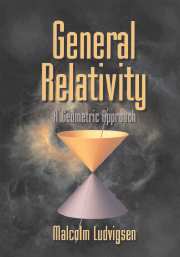Preface
Published online by Cambridge University Press: 04 June 2010
Summary
A tribe living near the North Pole might well consider the direction defined by the North Star to be particularly sacred. It has the nice geometrical property of being perpendicular to the snow, it forms the axis of rotation for all the other stars on the celestial sphere, and it coincides with the direction in which snowballs fall. However, as we all know, this is just because the North Pole is a very special place. At all other points on the surface of the earth this direction is still special – it still forms the axis of the celestial sphere – but not that special. To the man in the moon it is not special at all.
Man's concept of space and time, and, more recently, spacetime, has gone through a similar process. We no longer consider the direction “up” to be special on a worldwide scale – though it is, of course, very special locally – and we no longer consider the earth to be at the center of the universe. We don't even consider the formation of the earth or even its eventual demise to be particularly special events on a cosmological scale. If we consider nonterrestrial objects, we no longer have the comfortable notion of being in the state of absolute rest (relative to what?), and, as we shall see, even the notion of straight-line, or rectilinear, motion ceases to make sense in the presence of strong gravitational fields.
All notions, theories, and ideas in physics have a certain domain of validity. The notion of absolute rest and the corresponding notion of absolute space are a case in point.
- Type
- Chapter
- Information
- General RelativityA Geometric Approach, pp. xi - xiiPublisher: Cambridge University PressPrint publication year: 1999

